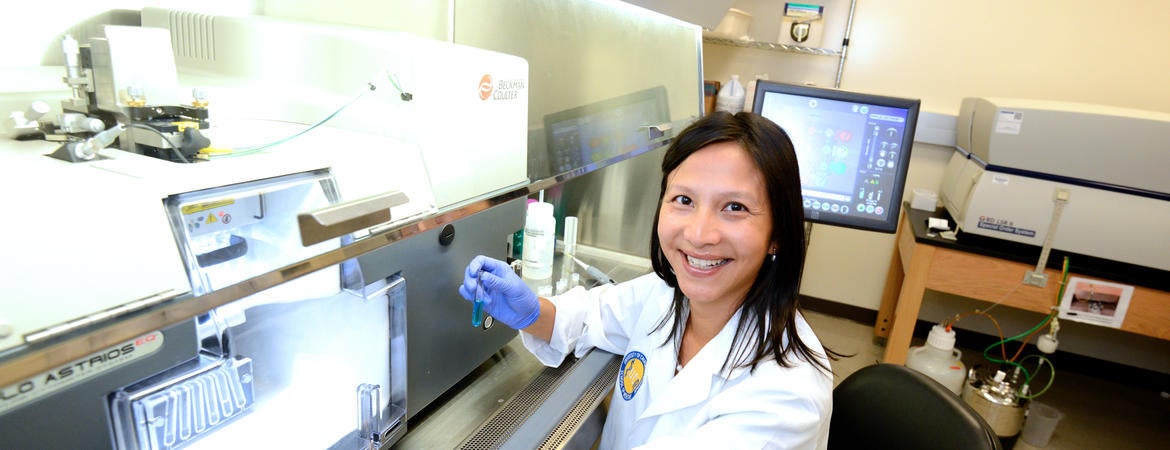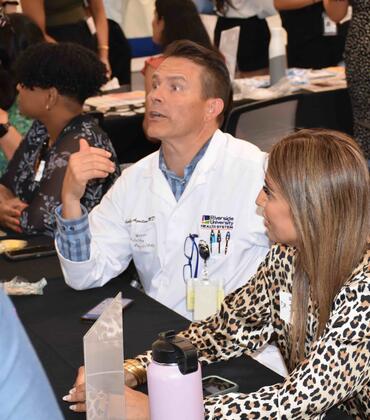
Meera G. Nair, Ph.D., assistant professor of biomedical sciences, is one of few professors who can say they were a part of a faculty team who interviewed and welcomed the very first cohort of a brand new medical school. She joined the UCR School of Medicine in October 2012, the same time the medical school received its initial accreditation.
“I was honored to be part of the faculty who interviewed and welcomed our first cohort of medical students in 2013,” Nair said. “Being able to contribute to the training of physicians in a new school with the important mission to improve the health of our underserved community was a deciding factor in my decision to join UCR. I also enjoy the collaborative spirit and excellent research environment here which has allowed my research to flourish.”
Nair’s research, which focuses on the immune response to parasitic worms, has indeed flourished, as she has made breakthroughs in discovering potential treatments for sepsis, the body’s extreme and uncontrolled immune response to an infection which kills about one in five affected people.
Her fascination for these parasitic worms, also known as helminths, began in her early years of training at the University of Edinburgh, Scotland. Here, Nair completed her doctorate degree on the innate immune response to filarial worms, followed by her postdoctoral training at the University of Pennsylvania where she pursued research on hookworms. At UCR, Nair now investigates the “yin and yang” of helminth infection.
“On one hand, parasitic worm infections are debilitating and afflict an estimated two billion people worldwide, causing organ dysfunction, malnutrition, and growth retardation,” Nair explains. “On the other hand, helminth infections in small doses may be beneficial in curing many illnesses including inflammatory bowel disease and sepsis because helminth infections trigger protective anti-inflammatory pathways.”
Nair’s lab investigates how to promote optimal immune response to alleviate parasitic worm infections, but also identifies pathways triggered by helminth infection that can be protective against sepsis and is currently investigating the therapeutic potential of these novel pathways.
In her lab, Nair currently works with postdoctoral scientist Jiang Li; graduate students Sangyong Kim, Sarah Bobardt, and Mark Wiley; and undergraduates Chengming Li and Sang Woo.
“I have always enjoyed teaching students about the intricacy of our body’s immune system, which helps us fight dangerous pathogens. Instilling curiosity and motivation to unravel the complexity of our immune defenses against pathogens is a big perk of my job,” she said.
Nair is a member of a growing team of infectious disease researchers at UCR. She, along with this research team, was selected to move into the Multidisciplinary Research Building 1, a brand new facility on campus that is intended to house multiple research teams in the life sciences, chemical sciences, medicine, and engineering.
“I am excited about the prospect of our school expanding to continue performing state-of-the-art research to tackle unmet needs in medical research with the overall goal to improve the health outcomes in our community and worldwide,” Nair said.
To read more about Nair’s research, visit https://ucrtoday.ucr.edu/54786 and https://ucrtoday.ucr.edu/49947.



